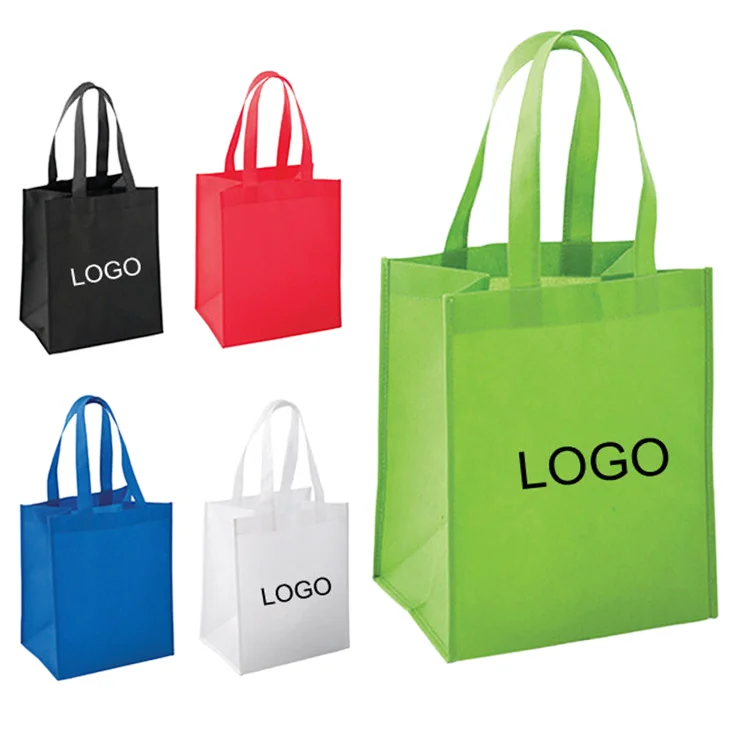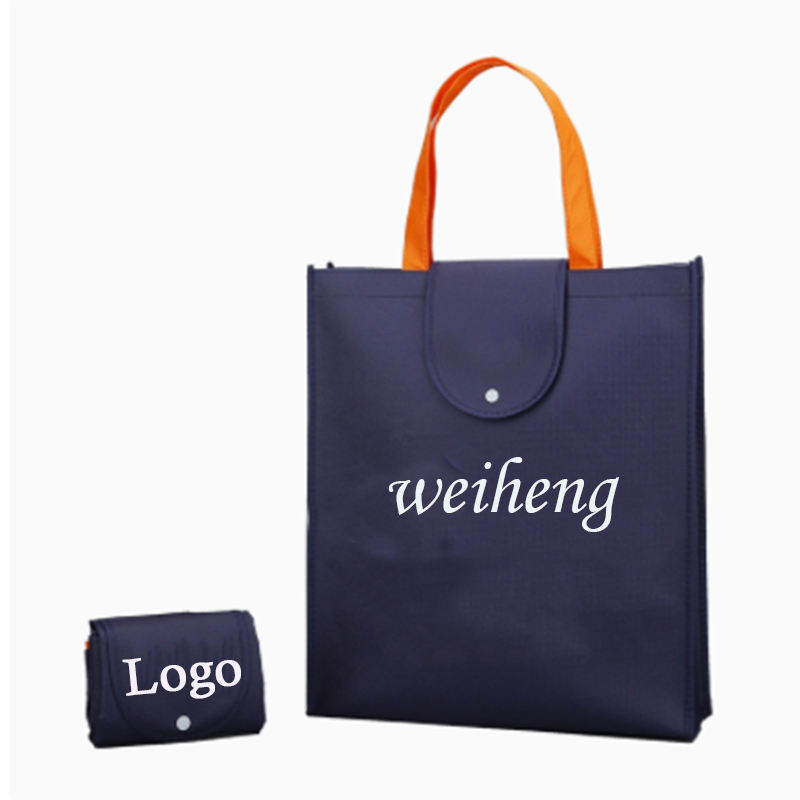Modern businesses face increasing pressure to adopt sustainable packaging solutions that align with environmental consciousness while maintaining brand visibility and functionality. The shift toward eco-friendly alternatives has transformed the packaging landscape, making non woven bags an increasingly popular choice for companies seeking to balance environmental responsibility with practical business needs. These versatile carriers offer a compelling alternative to traditional plastic bags, providing durability, customization options, and environmental benefits that resonate with today's environmentally aware consumers.

Environmental Benefits and Sustainability
Reduced Environmental Impact
The environmental advantages of non woven bags extend far beyond their reusable nature. Unlike traditional plastic bags that can take hundreds of years to decompose, these eco-friendly alternatives break down more readily when disposed of properly. The manufacturing process requires significantly less energy compared to conventional plastic production, resulting in lower carbon emissions throughout the production cycle. Many non woven bags are also recyclable, creating a circular economy approach that minimizes waste generation.
The material composition typically includes polypropylene fibers that are bonded together through heat or chemical processes rather than weaving. This construction method eliminates the need for harmful chemicals often used in traditional bag manufacturing. Additionally, the production process generates minimal waste byproducts, making the entire manufacturing cycle more environmentally responsible than alternatives.
Long-term Durability and Reusability
The robust construction of non woven bags ensures they can withstand repeated use without deteriorating, making them ideal for businesses promoting sustainability. These bags can typically handle weights of 10-15 pounds while maintaining their structural integrity over hundreds of uses. The material resists tearing and stretching, ensuring customers can rely on them for various shopping and carrying needs over extended periods.
Research indicates that a single high-quality non woven bag can replace thousands of disposable plastic bags throughout its lifetime. This replacement ratio significantly reduces the overall environmental footprint while providing customers with a reliable carrying solution. The longevity factor also enhances brand exposure, as customers continue using branded bags long after the initial purchase.
Business Advantages and Brand Benefits
Cost-Effective Marketing Solution
Businesses investing in custom non woven bags gain access to a mobile advertising platform that continues promoting their brand long after the initial distribution. The large surface area available for printing allows companies to showcase logos, contact information, and marketing messages prominently. Unlike traditional advertising methods that require ongoing investment, these bags provide continuous brand exposure for months or years following the initial cost.
The cost per impression for branded non woven bags often proves significantly lower than other advertising mediums when calculated over their extended usage period. Each bag acts as a walking billboard, exposing the brand to potential customers in various locations and contexts. This organic marketing approach builds brand recognition naturally while demonstrating the company's commitment to environmental responsibility.
Customer Loyalty and Perception
Companies that provide non woven bags often experience improved customer loyalty and brand perception. Modern consumers increasingly prefer supporting businesses that demonstrate environmental consciousness through their packaging choices. This preference translates into increased customer retention and positive word-of-mouth marketing that extends the brand's reach organically.
The practical value these bags provide to customers creates positive associations with the brand. Unlike disposable packaging that customers discard immediately, reusable bags continue serving customers' needs while reinforcing brand recognition. This ongoing utility fosters stronger emotional connections between customers and brands, leading to increased loyalty and repeat business.
Versatility and Customization Options
Design Flexibility and Branding Opportunities
The smooth surface of non woven bags provides an excellent canvas for various printing techniques, including screen printing, heat transfer, and digital printing. This versatility allows businesses to create eye-catching designs that accurately represent their brand identity. Color options are virtually unlimited, enabling companies to match their existing brand colors precisely or create striking contrasts that attract attention.
Size customization options range from small promotional bags suitable for trade shows to large shopping bags capable of carrying substantial purchases. Handle configurations can be adjusted based on intended use, with options including short handles for hand carrying or longer straps for shoulder carrying. These customization possibilities ensure businesses can create bags that perfectly align with their specific needs and customer preferences.
Multi-Purpose Applications
The versatility of non woven bags extends beyond traditional shopping applications to include conference bags, promotional giveaways, employee welcome packages, and event merchandise. Their professional appearance makes them suitable for corporate environments while their durability ensures they can handle various contents effectively. This adaptability allows businesses to use a single bag design across multiple marketing initiatives and customer touchpoints.
Retail environments benefit from the bags' ability to enhance the shopping experience while reinforcing brand identity. Restaurants can use them for takeout orders, while service businesses can provide them as premium packaging for products or materials. The bags' clean appearance and customization options make them appropriate for virtually any business sector seeking sustainable packaging solutions.
Manufacturing and Quality Considerations
Production Process and Material Quality
Understanding the manufacturing process helps businesses make informed decisions about non woven bags quality and specifications. The production begins with polypropylene pellets that are melted and extruded into continuous filaments. These filaments are then laid randomly and bonded together using heat, pressure, or chemical processes to create the non woven fabric. This method produces a material that combines strength with flexibility while maintaining consistent quality characteristics.
Quality control measures throughout the manufacturing process ensure consistent thickness, strength, and appearance across production runs. Advanced manufacturing facilities employ automated systems that monitor material properties and adjust processing parameters to maintain optimal quality standards. This attention to quality results in bags that meet performance expectations while providing reliable service life.
Testing and Performance Standards
Reputable manufacturers subject non woven bags to rigorous testing protocols that evaluate strength, durability, and safety characteristics. Tensile strength testing determines the maximum weight capacity while fatigue testing simulates extended use conditions. These tests ensure bags meet or exceed specified performance criteria before reaching customers.
Safety testing verifies that materials meet food-grade standards when bags will contact edible items. Environmental testing examines degradation characteristics under various conditions, confirming the bags' environmental benefits. Compliance with international standards ensures businesses can confidently distribute bags knowing they meet appropriate safety and performance requirements.
Implementation Strategies for Businesses
Transition Planning and Customer Education
Successfully implementing non woven bags requires careful planning to ensure smooth customer transition and maximum acceptance. Businesses should develop communication strategies that highlight the environmental benefits while emphasizing the practical advantages customers will experience. Training staff to explain the bags' features and benefits helps create positive customer interactions during the transition period.
Timing the implementation to coincide with environmental awareness campaigns or seasonal promotions can increase customer receptivity. Providing initial bags at no cost or reduced prices helps customers experience the benefits firsthand while building positive associations with the change. Clear messaging about the company's environmental commitment reinforces the decision's strategic value.
Measuring Success and Return on Investment
Tracking key performance indicators helps businesses evaluate the success of their non woven bags initiative. Customer satisfaction surveys can gauge reception and identify areas for improvement. Brand recognition studies can measure increased awareness resulting from the mobile advertising effect. Sales data analysis can reveal correlations between bag distribution and customer retention or acquisition.
Cost analysis should consider both direct expenses and indirect benefits such as improved brand perception and customer loyalty. Environmental impact metrics can demonstrate corporate social responsibility achievements while supporting sustainability reporting requirements. Regular evaluation ensures the program continues delivering expected benefits while identifying opportunities for optimization.
FAQ
How long do non woven bags typically last with regular use
High-quality non woven bags can withstand 50-100 uses or more depending on the weight carried and handling conditions. With proper care, including occasional cleaning and avoiding excessive weight loads, these bags can remain functional for several years. The exact lifespan varies based on material thickness, construction quality, and usage patterns, but most users find them significantly more durable than disposable alternatives.
Can non woven bags be safely washed and how should they be maintained
Most non woven bags can be cleaned using mild soap and water, though the specific cleaning method depends on the printing technique used for customization. Hand washing with gentle detergent is generally recommended to preserve printed designs and material integrity. Allow bags to air dry completely before storage to prevent mold or mildew development. Avoid harsh chemicals or high-temperature washing that could damage the material or printed graphics.
What weight capacity should businesses expect from standard non woven bags
Standard non woven bags typically support 10-15 pounds comfortably, while reinforced versions can handle 20-25 pounds or more. The actual capacity depends on the material thickness, handle attachment method, and overall construction quality. Businesses should specify their expected weight requirements when ordering to ensure bags meet customer needs without failure. Proper handle design and reinforcement points significantly impact the effective carrying capacity.
Are there any limitations or disadvantages to using non woven bags for business packaging
While non woven bags offer numerous advantages, they do have some limitations including higher initial costs compared to disposable plastic bags and limited water resistance compared to plastic alternatives. They may not be suitable for carrying liquids or wet items without additional protective measures. However, these limitations are often outweighed by the environmental benefits, brand exposure opportunities, and customer satisfaction gains that result from their use.




